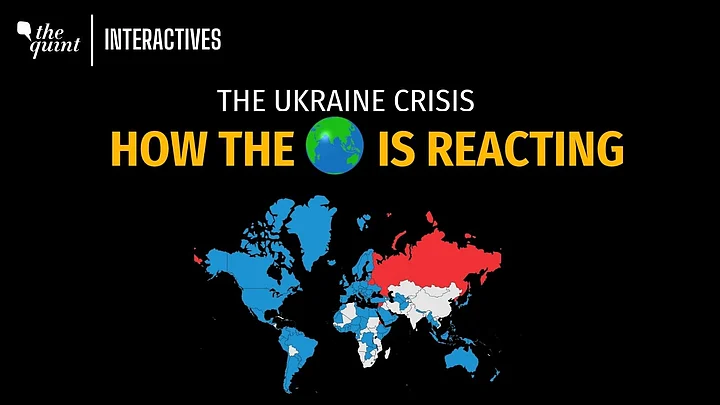The United Nations General Assembly held a vote on Wednesday, 2 March, to "deplore" the Russian invasion of Ukraine.
There were 141 nations that voted in favour, five that voted against, and 35 that abstained from voting.
The five nations that voted against the resolution were:
Russia
Belarus
North Korea
Syria
Eritrea
Some of the important nations that abstained from the vote are:
India
China
Pakistan
United Arab Emirates
Iran
New Delhi decided to toe the line. "India has been deeply concerned over the rapidly deteriorating situation in Ukraine and the ensuing humanitarian crisis," India's Permanent Representative to the UN Ambassador TS Tirumurti had stated at the UNGA.
Calling for an immediate ceasefire, and hoping that talks between Ukraine and Russia would lead to de-escalation, India said that "safe and uninterrupted passage" of Indian nationals, especially students, was its "foremost priority".
Most countries in the west, however, have rushed to aid Kyiv militarily and economically.
Here is a list of countries who are sending military and defence equipment to Ukraine so that it can defend itself against Russian troops.
The US is sending anti-armour, small arms, body armour and various munitions, along with anti-aircraft systems.
The UK is sending light anti-armour defensive weapon systems
France is sending defensive anti-aircraft weapons, digital weapons, military equipment as well as fuel.
The Netherlands will is sending air defence rockets and anti-tank systems.
Germany is sending 1,000 anti-tank weapons and 500 Stinger surface-to-air missiles.
Canada is also sending lethal military weaponry to Ukraine.
Sweden is sending 5,000 anti-tank weapons.
Denmark is sending 2,700 anti-tank weapons.
Norway is sending helmets, body armour up, and anti-tank weapons.
Finland will send 1,500 rocket launchers, 2,500 assault rifles, 150,000 rounds of ammunition
Belgium is sending automatic rifles, anti-tank weapons, and fuel.
Portugal is giving night-vision goggles, bulletproof vests, helmets, grenades, ammunition, and automatic rifles.
Greece is sending “defence equipment”.
Romania is sending fuel, bulletproof vests, helmets and other "military material" worth $3.3m.
Spain is sending mostly medical and defensive equipment such as bulletproof vests.
Czech Republic is sending mortars, pistols, assault rifles, machine guns, sniper rifles and bullets.
Croatia is sending small arms and body armour.
Finally, the EU is financing the purchase and delivery of arms worth 450 million euros ($502m).
Russia, however, is simply too strong militarily for a non-nuclear Ukraine to get deterred by the latter's conventional military.
The latest data of the Russian and Ukrainian militaries provided by the Financial Times exemplifies this.
Ukraine has around 2,55,000 active troops and 9,00,000 in reserves, bringing it to a total of 11,55,000.
Russia, on the other hand, has approximately 10,14,000 active troops and 20,00,000 in reserves – a total of 30,14,000.
In terms of aviation, Russia has 1,531 fighter jets in comparison to Ukraine's 67.
Moscow also has 538 attack helicopters, while Kyiv possesses only 34.
Such is also the case with armoured vehicles. Russia has 27,100 of the compared to Ukraine's 11,435. Russia also has 13,000 tanks in comparison to Ukraine's 2,430.
Finally, Russia possesses 214 warships, while Ukraine has 13.
Then there is the economic aspect of the war. Western countries have been relentless sanctioning Russian leaders (including Putin), banks, and financial institutions.
Even Switzerland, in a sharp shift from the country's traditional neutral position during times of war and conflict, has started to participate in the sanctioning of Russian banks and individuals.
Other countries have also started deviating from decades-long policies in order to aid Ukraine.
More information about sanctions can be found here.
(At The Quint, we question everything. Play an active role in shaping our journalism by becoming a member today.)
